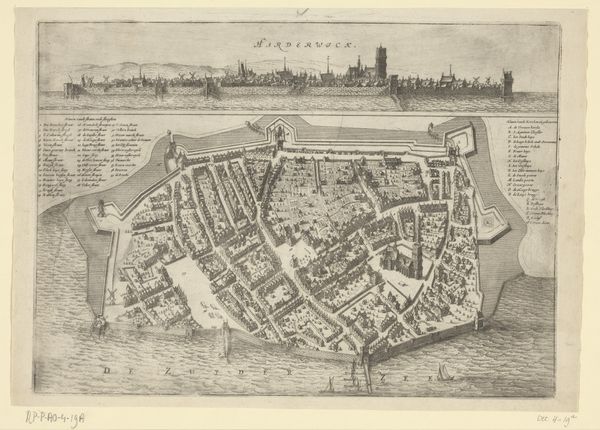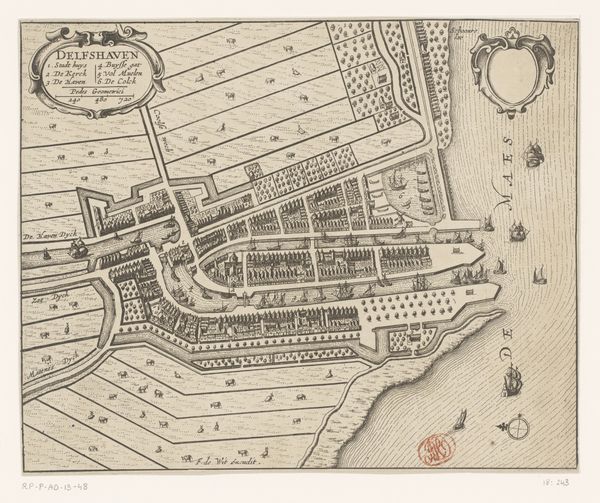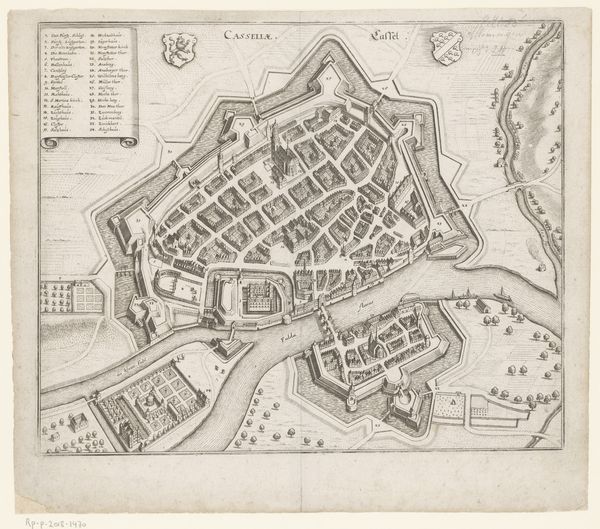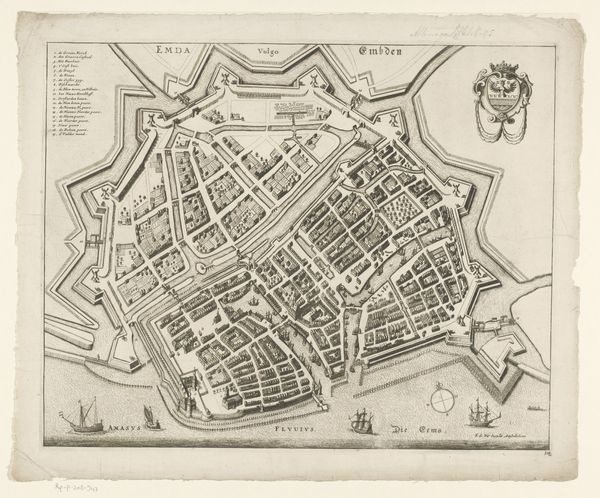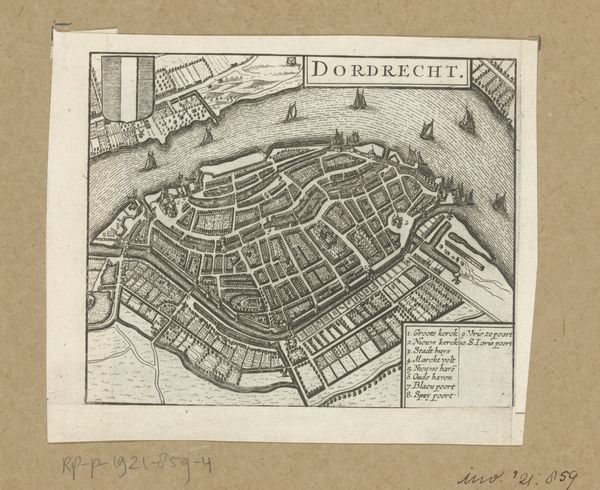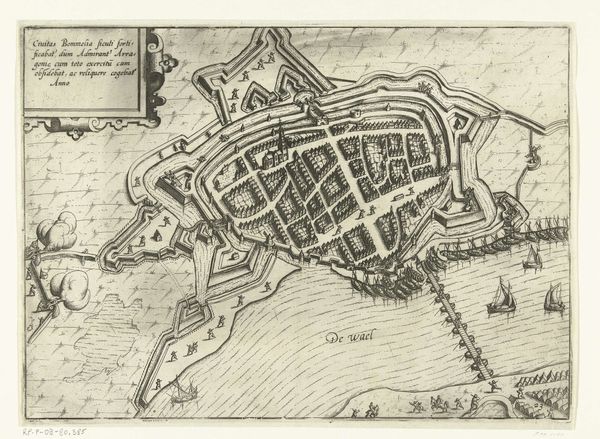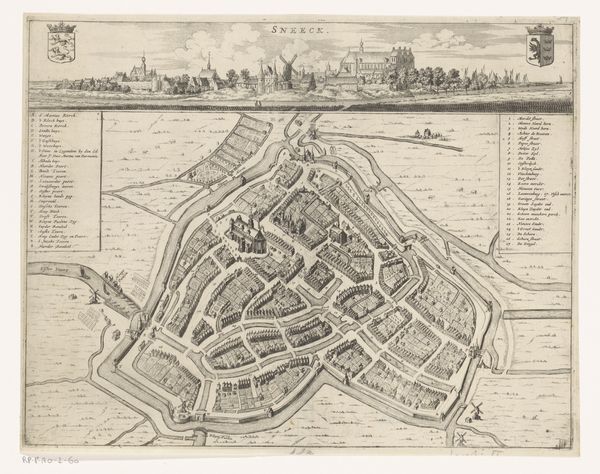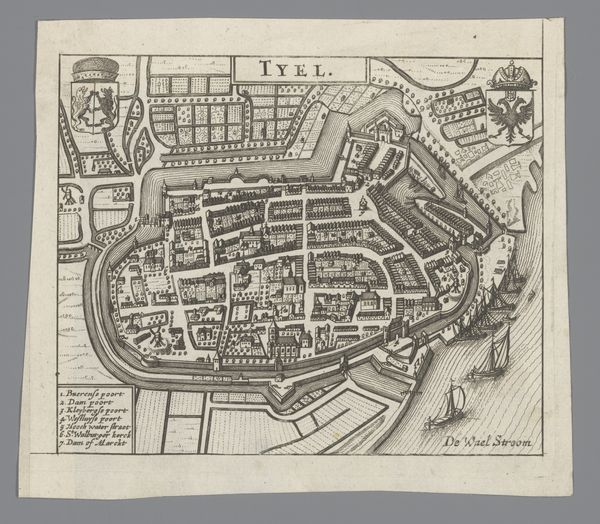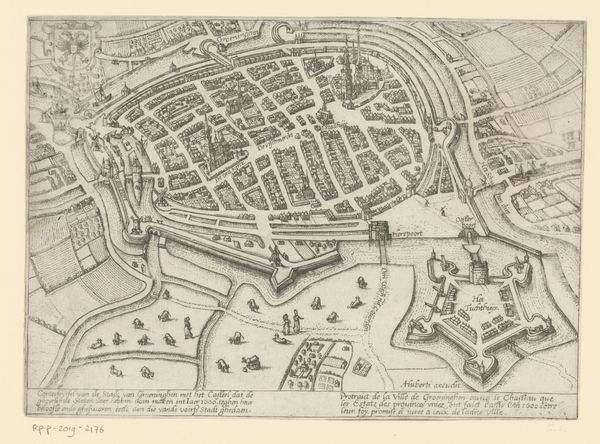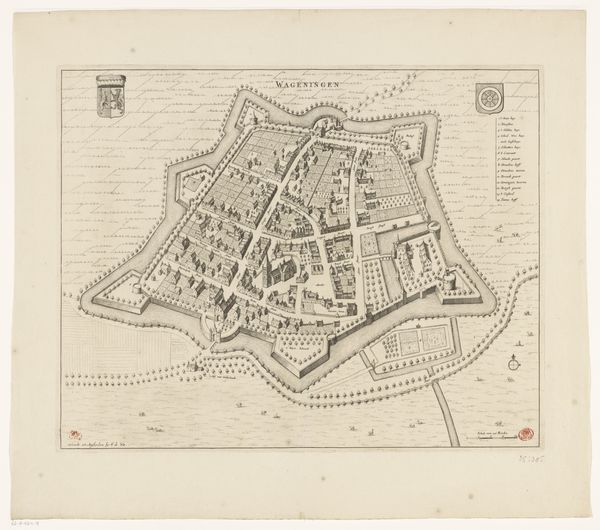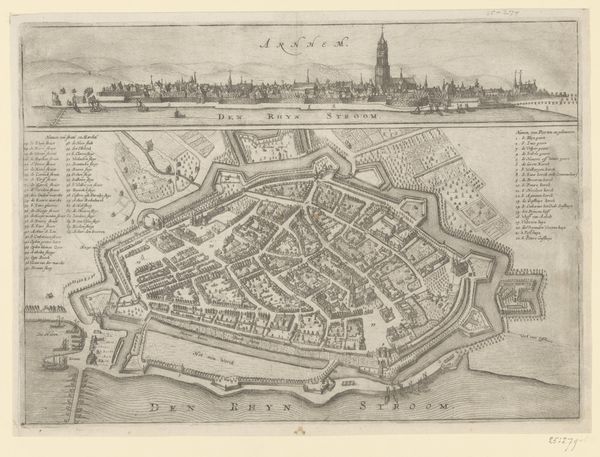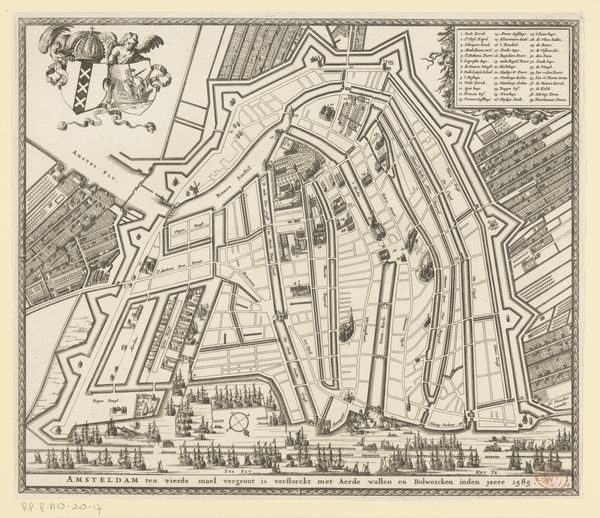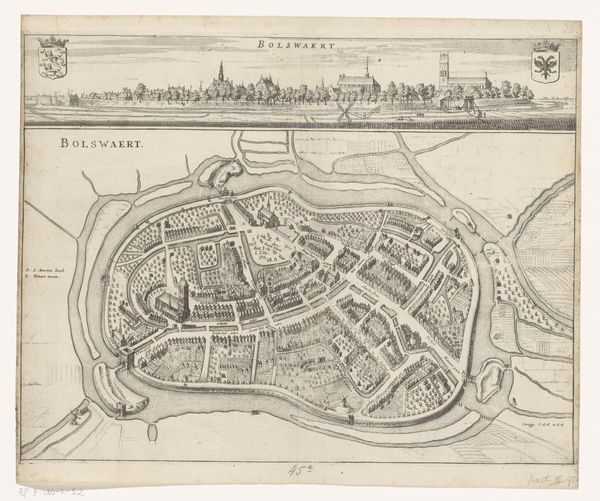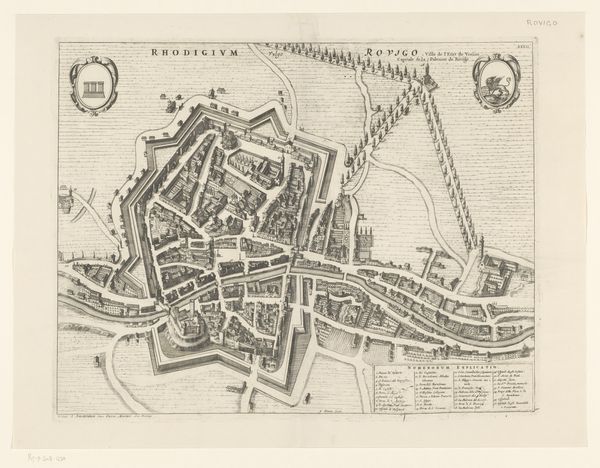
drawing, print, ink, engraving
#
drawing
#
medieval
# print
#
pen illustration
#
old engraving style
#
ink line art
#
ink
#
geometric
#
line
#
cityscape
#
engraving
Dimensions: height 122 mm, width 146 mm
Copyright: Rijks Museum: Open Domain
Curator: What strikes me immediately about this old plan of Arnhem—probably made between 1652 and 1678—is its intricate neatness. Everything’s so ordered, like a little puzzle. Editor: Yes, there’s a deliberate clarity here, but what's interesting is that city maps weren't simply about geographical accuracy; they were about making a statement. See how the river hems in the composition. The image exudes control. The pen and ink, combined with the engraving, give a graphic strength to it, defining power with visual accuracy. Curator: Power, huh? I was thinking more about the human stories within those walls. Like imagining families clustering around tiny hearths within those densely packed buildings, little stories making up the whole tapestry. It has a really grounded feeling to it. I can't help thinking how artists would interpret it differently now, with so many angles and stories that could be derived from it. Editor: Absolutely. It shows cultural memory—it echoes the medieval tradition. This anonymous mapmaker shows the power, the walls—which are very well-defined—protect the church. It highlights the structure, that feeling of civic stability within those ramparts, not so much the stories being written there, however potent. The walls symbolize much more than merely what keeps invaders away. Curator: True, but it also makes you wonder what liberties they took in the depiction. I mean, look at that coat of arms. How much of that’s symbolic versus a literal attempt at civic branding? Do we buy into the heroic narrative, or is it something subtler, a feeling of longing? Editor: The artist, in using symbols of the ruling family of the area in that time period is showing us the power structure; those symbols can have a deep and sometimes troubling psychological and cultural weight; there may well be hidden narratives we may not understand now. Curator: It definitely asks us to step back, to appreciate how deeply symbolic even an apparently simple plan like this can be. I think the tension between those levels makes it really appealing to a contemporary audience. Editor: Indeed, that echo of stability and deliberate display invites viewers to delve beneath that crisp ink and ask themselves about not only then, but now too.
Comments
No comments
Be the first to comment and join the conversation on the ultimate creative platform.
